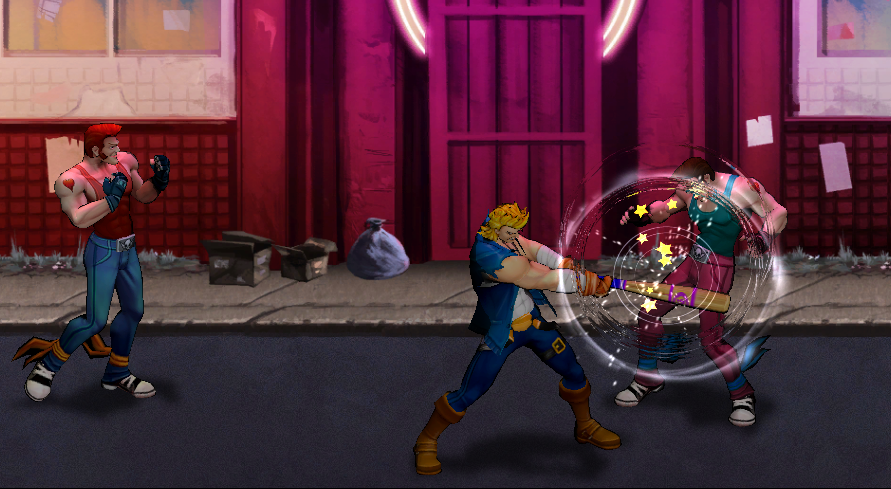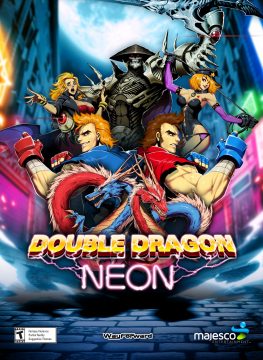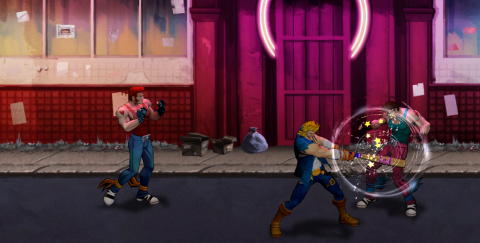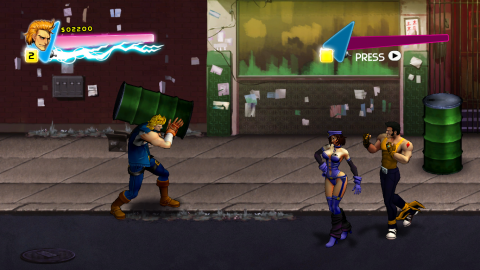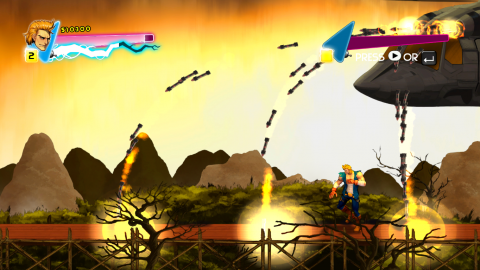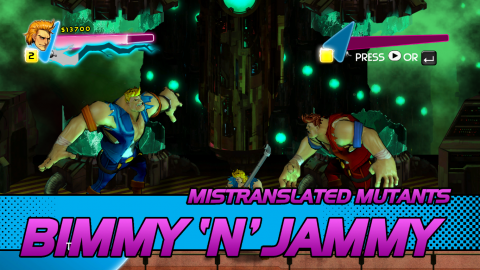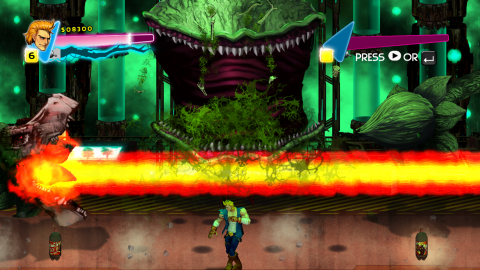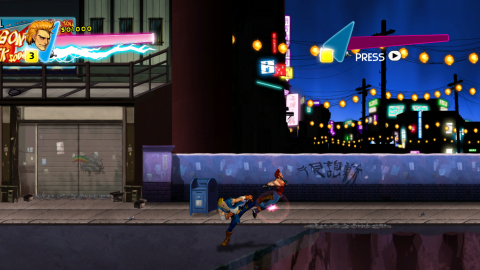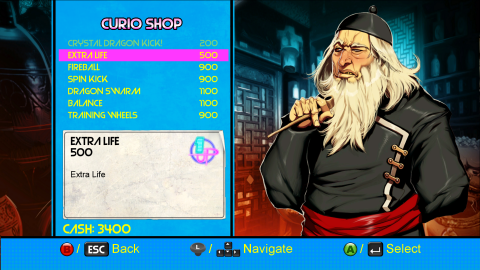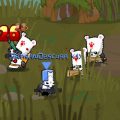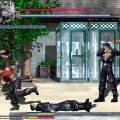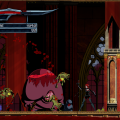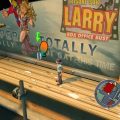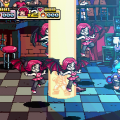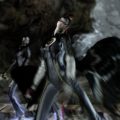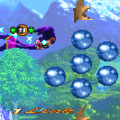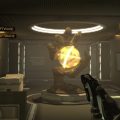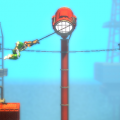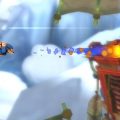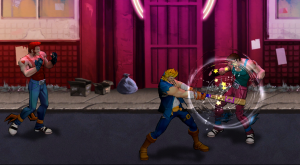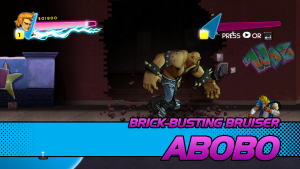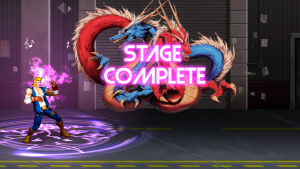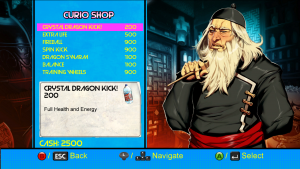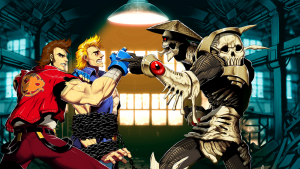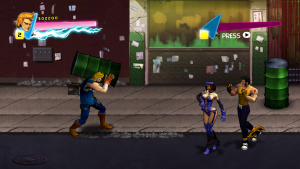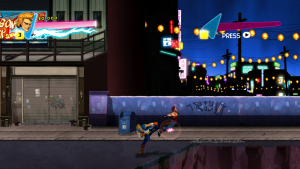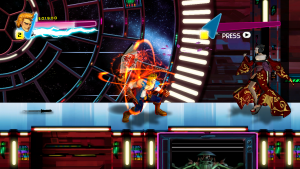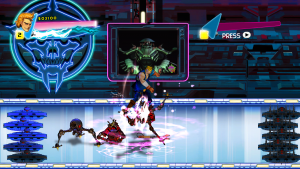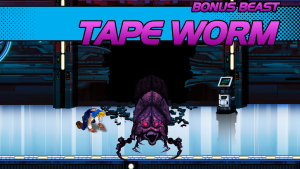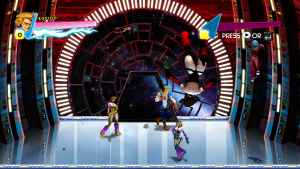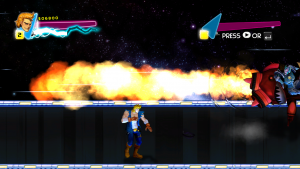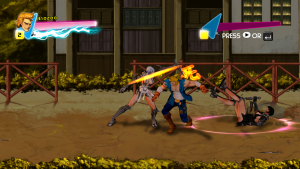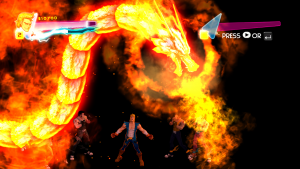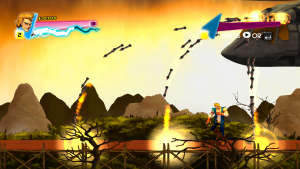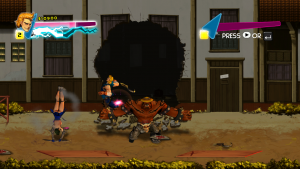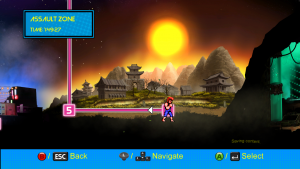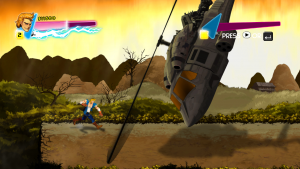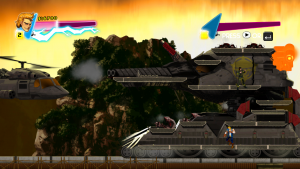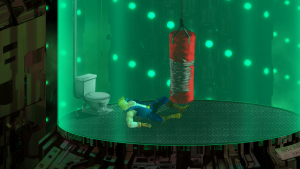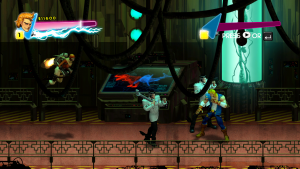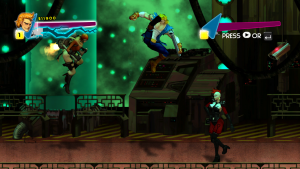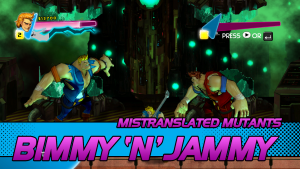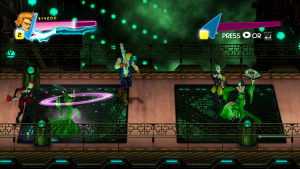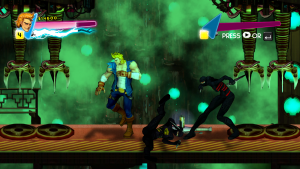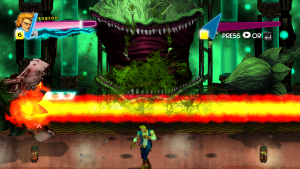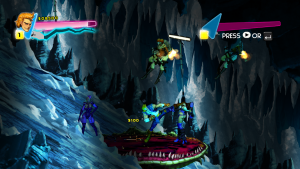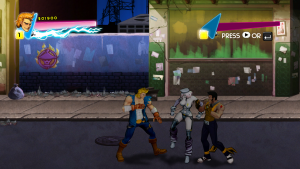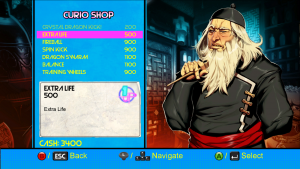- Double Dragon
- Double Dragon (NES / Game Boy)
- Double Dragon 2 (Arcade)
- Double Dragon II (NES/PCE)
- Double Dragon 3 (Arcade)
- Double Dragon III (NES)
- Double Dragon II (Game Boy)
- Super Double Dragon
- Double Dragon: The Revenge of Billy Lee
- Double Dragon V
- Double Dragon (Neo Geo)
- Rage of the Dragons
- Double Dragon Advance
- Double Dragon (Mobile)
- Double Dragon II: Wander of the Dragons
- Double Dragon (Zeebo)
- Abobo’s Big Adventure / Fighting of Double Dragon
- Double Dragon Neon
- Double Dragon IV
- Double Dragon: Other Media
The Double Dragon franchise has been passed around to more developers than most people would even bother to count throughout the years, with some doing a better job than others. So it’s really no surprise that it would eventually end up in the hands of WayForward, a company with a rather interesting history full of licensed games themselves. Their take on the series is like nothing the Double Dragon series has seen before in terms of style or gameplay, even if its goofy sense of humor might be a little off-putting to some fans. But even divorced from the franchise, it’s still a quality brawler that easily outpaces most other recent efforts in the genre.
The game starts with the familiar scene of Marion getting slugged in the gut by a group of thugs, before being carried off. (If you turn on the damage numbers, this particular blow apparently does 999 damage, somehow.) Billy’s reaction of “Marion? Aw, man… not this again!” sets the tone for the rest of the game perfectly. Not long afterwards, it’s revealed that the Black Warriors are being led by the evil Skullmageddon, a “super lich” with the stylings of The Shredder and the voice of Skeletor. Not only has he kidnapped Marion, he also somehow managed to build himself a space station, a giant tank, and an advanced genetic research facility, yet somehow decides to antagonize two guys who punch people a lot instead of, say, the UN.
Neon doesn’t even take itself remotely seriously, to the point where it’s basically one big, good-natured parody of the series, its genre, and the entire decade that spawned it. From the way Billy and Jimmy are re-imagined as a couple of goofball surfer dudes, to little touches like the game’s “go hand” being clad in a Power Glove, even to the fact that many of the game’s bosses are obvious “homages” to other games of the era, like a boss that’s basically an evil Mega Man. For somebody used to the dead-serious martial arts action of the earlier games, it’s going to be a pretty big swerve. In fairness, however, it’s not as if the series has had anything remotely resembling consistency when it comes to its own universe. We are talking about the series where the heroes went to Egypt to beat up Cleopatra’s ghost, and teamed up with the BattleToads.
In terms of gameplay, Neon takes bits and pieces from several of the original Double Dragon games. It has a shop system resembling the one from Double Dragon 3 (though no need to pay any extra real money), several callbacks to setpieces from the NES Double Dragon II, and a more expansive moveset like Super Double Dragon. There are a lot of other influence to be found from other beat-em-ups, as well, from a more in-depth combo system that you’d find in Capcom’s best work, to objects like barrels you can smash open to find weapons and power-ups – a first for the series.
Billy and Jimmy share the same set of moves, but there’s a pretty wide variety of actions to make use of. There are two buttons for weak and strong attacks (mostly, but not entirely, punches vs. kicks), along with dedicated buttons for crouching and breaking into a run. By doing an attack while crouching or running, you can perform more powerful moves like sweep kicks, shoulder charges, and launching attacks. As usual, hitting an enemy enough times stuns them, which either lets you hit them with a powerful blow that knocks them skyward, or you can toss them away, potentially right through other enemies or into traps. Tossed enemies also potentially bounce off nearby walls, and if you’re fast, you can follow up with even more hits before your enemies hit the ground. Sadly, the famous “grab somebody by the hair and knee them in the face” move didn’t make the cut, although it’s at least referenced.
There’s actually a surprising amount of depth to the combat system, once you get used to the way the game moves. Most of your moves have a certain windup time to them, which can make Neon a little less speedy than a lot of modern brawlers out there, and it even feels different than previous Double Dragon games. While it can be a bit odd to get used to at first, it ties in with a focus on knowing the right opportunities to unleash your most powerful attacks without taking a hit in return. This leads to one of the game’s most interesting mechanics, where crouching or dodge rolling under attacks before they hit you will briefly give you a massive damage boost. While not every attack can be dodged, all enemies generally have a lot of specific attack patterns that can be watched for and exploited.
There’s also a lot of focus on co-op, or as the game refers to it, “bro-op”. Billy and Jimmy can stop to offer a high-five to their brother at any time, which lets them do a variety of things like exchange health, activate the damage buff normally gained by a successful dodge, or – if you really want to be a jerk – steal health from the other player. If one of the brothers goes down, it’s also possible for the other to pick him back up and save him from losing a life, although doing this will leave you wide open. The game was clearly meant to be played together with a buddy, which can make a single player run frustrating when you have to restart a level from scratch after losing all your lives.
Thanks to the influence of Castle Crashers, every modern brawler has to have some kind of RPG element, and Neon is no exception. It does drag the game down, but it’s at least somewhat less intrusive than other examples. Throughout the game, you’ll find tapes dropped from enemies and objects. Tapes come in two types: Stances affect your stats, like maximum health, power, and defense, and most of them will give you passive benefits, such as an increasing damage boost with the amount of hits you can land in a row without taking any damage, or stronger weapon attacks. Sosetsitsu are special moves, which include a crowd-clearing spin kick, fireballs, a healing touch, or the summoning of a fiery dragon. These draw from a slowly recharging energy meter, which can be fueled by picking up batteries. Your stance and special move can be switched out at any time by pausing the game, so it can be useful to swap them out frequently, depending on the situation. Enemies also drop cash for shops you’ll find in certain levels, where you can buy more tapes, health, and extra lives (which only ever count for the current stage) from a grouchy Asian master.
The more tapes of one type you collect, the more benefit that particular stance or special move gives you, with the catch being that every tape has a cap on its level. To increase the cap, you have to beat bosses, which will drop mythril. You then need to bring it to the tapesmith, whom you can only visit by playing through a good portion of the second stage. If you’re playing on the game’s default difficulty, grinding is thankfully not all that necessary beyond beating the final boss. On any setting above that, however, you’re going to need to get used to repeatedly playing levels to kill bosses and get their mythril to have the stats you need to win. It definitely helps that you never have to resort to this to get through about 90% or so of the game, at least, which makes the grinding somewhat forgivable.
The game is split into ten missions, each of which can be replayed from a world map at your leisure. The stage design is definitely one of the highlights of the game, with a lot of moments where you’ll have to deal with all kinds of environmental hazards. One particular stage has deal with a helicopter, which launches missiles at you, tries to blow you into a pit, and culminates in flipping itself upside down and attempting to shred you, all while you’re still fighting off enemies. Another stage has an homage to the helicopter scene of Double Dragon II, where an airlock constantly opens in the background, threatening to suck anything that ventures too close out into space. There are many more hazards to keep in mind while brawling, like planks you can walk onto to launch enemies skyward, pits to be knocked into, or arrows that rain from the sky. It’s this kind of variety, as well as the short length of each stage, that keeps the pacing of the game just about perfect.
It helps that the enemies manage to stay just as varied as the locations you fight them in, with each level usually introducing one new type of enemy, each with their own unique pattern and tactics. Williams, for example, always make a long pause before their punch combo attack. You’ll eventually come across enemies with more varied tactics, like geishas that teleport around the screen and toss fans at long range, or jetpack riding ladies that usually need to be fought in the air to beat them. The bosses are particularly interesting, too, with the highlights being a giant man-eating plant with two sprouts that spawn a tyrannosaur head and a shark head, respectively, while the mother plant keeps vomiting skeleton parts, and an expansion of one particular idea from Double Dragon II on the NES, where the Lees have to platform across its scaffolding of a giant tank, taking out its armaments before trashing its giant weak point. There are also two deformed brothers named Bimmy and Jammy, a reference to the famous typo in the Double Dragon III intro.
The game’s goofy sense of humor helps keep things fresh the entire way through, even if some jokes work better than others. The Lees constantly make lame puns and one-liners as they brawl, like shouting out “Stabular!” when they toss a knife into the nearest punk. If you’re playing in co-op, they’ll also bicker with each other, which definitely gives the brothers a lot more personality. Skullmageddon is also one of the funniest villains of gaming history, being somewhat of a pathetic loser once you get past his threatening appearance, and he gets some of the game’s funniest lines. (“Look, I’m flashing orange so fast! Just hit me one more time!”) Even the basic mooks get in on it, like the way Williams tend to be overconfident jerks who occasionally allude to the shoddy treatment their boss gives them.
The game’s graphics, while not spectacular compared to some of the brilliant animation of games like Scott Pilgrim, are fairly good. The characters are polygonal models while the backgrounds are 2D. It’s the art style that really makes it, with everything in bright pastel colors, which makes the characters on screen pop out from the somewhat less colorful backgrounds. The music alone makes the game worth playing – almost every song is an homage to some genre of eighties music, from rock with corny lyrics about co-op, to an Enya-esque rendition of the Double Dragon theme, to one song that sounds like it could have come straight from Michael Jackson’s discography. If there is one particular highlight, it’d be the Queen-styled credits song, complete with full lyrics sung by a lamenting Skullmageddon.
The PlayStation 3 and Xbox 360 versions of the game are more or less identical, while the Steam version offers online co-op, something sorely missed in the console versions. Unfortunately, the netcode is often pretty spotty, which can make things pretty annoying. The PC version also comes with a potentially crippling bug that was never patched out: a certain stage hazard of countless arrows raining form the sky can frequently lead to a complete freeze of the game. Countermeasures like limiting the game to use only one CPU core can help, but never entirely prevent this from happening. Since one of the affected stages is among the longest in the game, this can easily render the game impossible to complete.
Overall, for all it does right, Neon is going to be a divisive game for those who’ve kept up with the Double Dragon franchise throughout its history. But even if you don’t agree with its particular interpretation of the universe, it’s a fantastic game in its own right.
